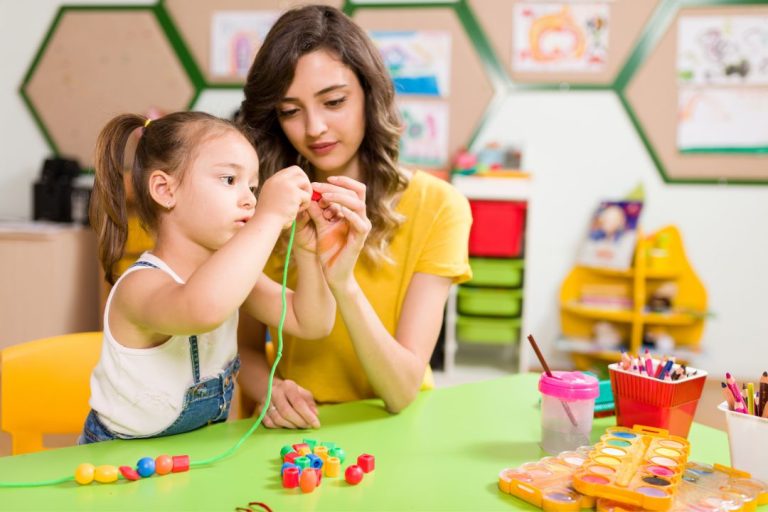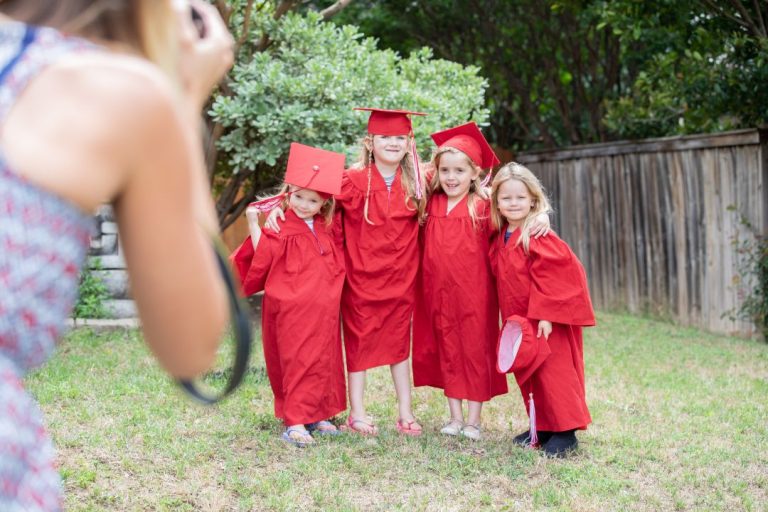Why Do Kids Hate School? Uncovering the Truth

Kids often dislike school due to a lack of engagement or relevance to their interests. Discomfort from social pressures can also contribute to their aversion.
School is supposed to be a temple of learning and a place where future dreams take shape, but for some children, it represents boredom, anxiety, and a one-size-fits-all approach that stifles individuality. Parents and teachers frequently scratch their heads, wondering why the excitement of education fades so quickly for their young learners.
Numerous factors may be at play, including rigid curriculums, uninspiring teaching methods, or environments that feel unwelcoming or unsafe. Given the dynamic nature of the modern world, education systems often struggle to keep up, potentially leading to a disconnect between what students are taught and what they feel is applicable to real life. As a result, finding ways to make school more captivating and personally meaningful stands at the heart of addressing children’s disdain for formal education.
Exploring School Aversion In Kids
Exploring School Aversion in Kids delves into the complex web of emotions and reasons that lead some children to dread the thought of attending school. Understanding this adverseness is crucial, not only for caregivers and educators who strive to foster a nurturing learning environment but also for society as a whole as we aim to guide the next generation towards a lifelong journey of knowledge and growth.
Understanding The Aversion From A Child’s Perspective
Imagine stepping into a world where the rules seem complex, the environment feels intimidating, and the pressure to perform is overwhelming. This is the reality for many children facing school aversion. Through a child’s eyes, the classrooms, hallways, and schoolyards can transform into challenging arenas and they grapple with various aspects:
- Social dynamics can include bullying or peer pressure.
- Academic demands may feel insurmountable, especially if there are underlying learning difficulties.
- Lack of engagement due to teaching methods or curriculum that don’t align with their interests or learning styles.

Core Factors Triggering Dislike For School
Several factors coalesce to form a child’s negative perception of school. These core elements can vary vastly from one individual to another but typically encompass:
| Social Factors | Academic Factors | Personal Factors |
|---|---|---|
| Struggles with making friends Fear of bullying | Dissatisfaction with curriculumPressure to achieve high grades | Family issues Lack of sleep or nutrition |
Comparing The Emotional Versus Rational Reasons
Emotional reasons for school aversion are deeply rooted in how a child feels. These could include:
- Fear of failure or criticism
- Feeling misunderstood by teachers or peers
- Low self-esteem or confidence
Rational reasons, on the other hand, could include tangible issues such as:
- Perceived irrelevance of certain subjects to real-life goals
- Observed disconnect with traditional teaching methods in a digital age
- Concerns over the practicality of homework
Distinguishing between these emotional and rational reasons can help in tailoring approaches for addressing school aversion. A combined effort from parents, educators, and the children themselves is key to reshaping their school experience into one of positivity and enthusiasm for learning.
Why Kids Feel School Is Imprisoning
For many children, school can feel less like a place of learning and more like a cell of confinement. This perception is not just about being away from home, but about an array of factors that contribute to a sense of being shackled by the very institution meant to liberate minds. We’ll delve into the key reasons many students equate school to prison, uncovering the parallels between structure and freedom, compulsory subjects, and the uniformity that suppresses individuality.
The Structure And Strict Schedules Compared To Freedom At Home
It’s a stark contrast for students: the free-flowing, carefree environment of home life against the rigid, unbending schedule of a school day. Each hour is micromanaged, from bell to bell, with little room for spontaneity or choice. This strict regime can leave them feeling as if they’ve traded their autonomy for an attendance sheet.
- Class transitions dictated by the minute
- Structured lunchtimes that often don’t align with their hunger cues
- Limited free periods or recess, restricting unstructured social interaction and play.
The rigidity can be draining, with the vibrancy of a child’s day dimmed by the monochrome predictability of school life.
Mandatory Subjects That May Not Align With Interests
School curriculums have a one-size-fits-all approach, requiring students to take courses in subjects that fail to ignite their passion or curiosity. Not every child is wired to love or even tolerate subjects like advanced mathematics or ancient history, yet they find themselves sitting through these classes, disengaged and discouraged.
- Lack of relevance to their lives or future ambitions
- Mandatory courses leave little room for electives that might actually engage them
- Testing and grading pressures even in subjects they find uninspiring or exceedingly challenging
This forced academic march often leads to a disconnection from the innate joy of learning, as education becomes a game of endurance rather than exploration.
Uniforms And Rules Restricting Self-expression
The wearing of uniforms can feel like the erasure of a child’s personal identity, forcing them to adopt a homogenous look that supports conformity over individuality. School rules further clamp down on their freedom of expression, dictating everything from hairstyles and jewelry to the type of shoes they can wear. For many kids, school becomes an environment where uniqueness is squashed rather than celebrated, adding to the sensation of being in a restrictive, controlling space.
| Aspect of Self-Expression | How School Restricts It |
|---|---|
| Fashion and Style | Uniform requirements limit clothing choices |
| Hair and Grooming | Rules on haircuts, colors, and styles |
| Accessories | Limits on the type and amount of jewelry |
When combined, these restrictions form a straitjacket of sorts, binding students to a form that does not necessarily fit their true selves.
Personal Struggles Within The Classroom
Personal Struggles within the Classroom play a significant role in shaping children’s attitudes toward education. A classroom should ideally be a haven of learning and discovery, but for many students, it becomes a battleground filled with various personal challenges. These struggles can stem from academic pressures to social dynamics, often leading to a negative school experience. Today, let’s delve into the factors that contribute to why some kids develop a dislike for school, starting with a look at personal adversities they face in their educational journey.
Academic Pressure And Fear Of Failure
The high demands of academic excellence weigh heavily on students. The pressure to perform well in exams, standardized tests, and classroom assignments can lead to an overwhelming fear of failure. This fear often results in:
- Stress and anxiety about grades and future prospects.
- Decreased motivation and interest in learning.
- Procrastination and avoidance of school-related tasks.
When students are primarily evaluated on their academic performance, the joy of learning is overshadowed by the dread of not meeting expectations, turning school into a source of distress rather than enlightenment.
Social Anxieties And Struggles With Peers
The classroom is not just a center for academic growth but also social interaction. For some, it can be a minefield of social anxieties. These anxieties manifest themselves in several ways:
| Types of Social Anxieties | Impact on Students |
|---|---|
| Fear of speaking in front of the class | Reluctance to participate or ask for help when needed |
| Difficulty in forming friendships | Feelings of isolation and loneliness |
| Bullying or peer pressure | Lack of safety and comfort in the school environment |
As a result, students might find it challenging to focus on academics when consumed by the need to navigate complex social waters that seem fraught with peril.
Unidentified Learning Disabilities Or Challenges
Learning disabilities or challenges often go unrecognized in classroom settings. Without proper identification and support, affected students might struggle with:
- Understanding and keeping up with the curriculum.
- Engagement in classroom activities that don’t cater to their learning styles.
- Feel alienated due to their difficulties.
Challenges such as dyslexia, ADHD, or autism spectrum disorder require specific educational approaches. When these needs are not met, school can become a source of frustration and ultimately, resentment.
Impact Of Modern Teaching Methods
The way children are taught in schools has undergone significant changes over the years. With the evolution of modern teaching methods, education aims to be more engaging, inclusive, and adaptive to the diverse needs of students. Despite these intentions, a rising concern has been noted regarding how modern pedagogy may potentially contribute to kids developing an aversion to school. This section dives into the nuances of current educational practices and how they might inadvertently be pushing students away.
How Current Pedagogy Might Disengage Students
Today’s teaching strategies strive for innovation and effectiveness, but they may not resonate with every learner. Schools often implement structured curriculums focused on standardized testing which can stifle creativity and discourage critical thinking. Students, feeling constrained by this rigidity, may become disengaged. Additionally, the lack of personalized attention in overcrowded classrooms can leave some children feeling overlooked, further diminishing their enthusiasm for learning.
The Discrepancy Between Interactive Technology At Home And Traditional Methods At School
Children today are digital natives, growing up in a world filled with interactive and immersive technology. At home, they engage with gadgets and platforms that provide instant responses and reward mechanisms. This engagement contrasts sharply with the passive and one-dimensional teaching styles often found in schools. The gap between the dynamic digital environment at home and the static traditional classroom can make school seem dull and uninteresting in comparison.
Classroom Dynamics And Teacher-student Relationships
Modern teaching environments can be complex, where classroom dynamics and the quality of teacher-student relationships play vital roles. Teachers, challenged with larger class sizes, may struggle to connect with each student individually. This can lead to a weak teacher-student relationship, compromising the student’s experience and engagement. A positive bond between teacher and student is crucial since it can foster a love of learning and encourage students to participate actively in their education.
Home Environment And Parental Attitudes
One of the less discussed but equally significant factors in why kids may develop a distaste for school lies within the confines of their home environment and the attitudes of their parents towards education. The vibe at home and the subtle, and sometimes not-so-subtle, messages that parents communicate about school play crucial roles in shaping a child’s educational experience. Let’s delve into how parental pressure and the ripple effect of siblings’ experiences can affect a child’s school life.
The Role Of Parental Pressure And Expectations
Parental pressure to excel academically can sometimes backfire, leading to stress, anxiety, and negative school experiences for children. While encouragement and support are essential, excessive expectations can create a fear of failure and a feeling of constant dissatisfaction, which could translate into a hatred for the scholarly environment. Kids can sense when their parents are not just expecting them to do well but are overly invested in the outcome. This pressure can be manifested in:
- Over-scheduling: Packing a student’s day with back-to-back activities, leaving little time for rest.
- Excessive tutoring: Enrolling children in numerous enrichment programs regardless of their interests or needs.
- Comparative feedback: Highlighting siblings’ or peers’ accomplishments in an unhealthy manner.
Such environments often lead children to associate learning with stress, rather than a natural curiosity and the joy of discovery.
Influences Of Siblings Or Family Members’ School Experiences
Children are highly perceptive to the stories and experiences that siblings and other family members share about school. Negative narratives can contribute to preconceived notions and anxiety about what lies ahead in their own educational journey. If a sibling has struggled academically or disliked school, it might set a precedent for others in the family. Key influences include:
| Family Member’s Experience | Effect on Child |
|---|---|
| Older sibling’s academic challenges | May create a sense of inevitable difficulty or failure. |
| Recounting negative school events | Can instill fear or disinterest in school activities. |
| Comparisons with successful siblings | Could lead to diminished self-esteem and school aversion. |
When siblings have contrasting experiences, it’s critical for parents to individualize their support and maintain a positive outlook about school to foster a healthier learning environment for each child.
Societal Expectations And Stereotypes
‘Societal Expectations and Stereotypes’ often play a crucial role in shaping how kids perceive school. From a very young age, children are exposed to various societal norms that may not align with their personal experiences or interests. These cultural forces can transform the concept of education into a monolithic expectation instead of a personalized journey, leading to a deep-seated aversion to the entire school experience. Let’s delve into how specific societal influences, such as media portrayal and peer dynamics, contribute to this phenomenon.
Media Portrayal Of School And Its Impact On Mindset
In today’s digital age, media portrayal of school significantly influences kids’ attitudes toward education. Television shows, movies, and social media often depict school life as a burden, filled with homework overload, negative teacher-student interactions, and an endless cycle of tests and grades. This skewed representation can deeply affect students’ mindsets, making them believe that school is little more than a chore. By downplaying the positive aspects of education, such as learning new skills or forming friendships, the media can create a bias that sees school as an institution to endure rather than enjoy.
Peer Influence And The ‘Cool’ Factor Of Disliking School
Additionally, the impact of peer influence cannot be underestimated in how children perceive school. The notion that it’s ‘cool’ to dislike school can spread through social circles, making it difficult for students who might enjoy learning to openly express their enthusiasm. The pressure to conform to this collective mindset can encourage kids to adopt a negative view of education to fit in with their peers. This can lead to an unnecessary and harmful stigma surrounding the appreciation of knowledge and the joy of learning.
Finding The Root: Why Do Kids Hate School?
The echoing refrain of “I hate school!” from children across the globe suggests a disconnect between youthful energy and the educational system designed to serve it. However, this disconnect is not an unsolvable puzzle. By digging deeper into the underlying reasons for this school aversion, educators and parents can find effective strategies to rekindle a love for learning in even the most reluctant students.
Methods Of Assessing And Addressing Individual Student Needs
Understanding the unique needs of each student stands at the forefront of transforming their educational experience. Diverse learning styles, capabilities, and interests require a personalized approach to education that traditional teaching methods may overlook.
- Surveys and questionnaires: Tools to capture student feedback regarding teaching styles, subjects, and classroom dynamics.
- One-on-one meetings: Personal interaction to understand individual challenges and aspirations.
- Performance analytics: Monitoring academic data to identify areas where students excel or struggle.
Assessments provide the insight necessary to tailor educational content, thus fostering an inclusive and engaging learning experience that aligns with individual strengths and weaknesses. When students feel understood and supported, their natural curiosity flourishes, transforming erstwhile dreary school days into compelling journeys of discovery.
The Importance Of Adapting The Learning Environment
The ambiance of a learning environment can have a profound impact on a student’s attitude towards school. An environment that stimulates curiosity and encourages creativity is far more likely to engage students than one that feels restrictive and monotonous.
| Traditional Environment | Adaptive Environment |
|---|---|
| Rigid seating arrangements | Flexible seating options |
| Uniform teaching approach for all | Customized educational strategies |
| Limited student engagement | Interactive and collaborative activities |
By incorporating elements such as flexible seating, access to technology, and collaborative learning spaces, educators can create a dynamic environment that is more conducive to active learning and participation. This approach respects diverse learning preferences and promotes a culture of mutual respect and shared responsibility for educational success. The result? A classroom that students are excited to enter every day.
Creating An Inclusive Academic Atmosphere
An inclusive academic atmosphere is foundational to transforming the sentiment of dread that many kids associate with school into one of genuine excitement and belonging. By prioritizing a learning environment where every student feels valued and supported, we can tackle the all-too-common question: Why do kids hate school? Such an atmosphere doesn’t solely benefit those who are struggling; it elevates the educational experience for all students, creating a ripple effect of positivity and engagement. Cultivating this environment is not just the responsibility of the educators, but also of the schools’ broader frameworks and policies.
Strategies For Teachers To Make Learning More Engaging
To ensure that students are not only present but actively participating and absorbing knowledge, teachers can embrace several strategies:
- Interactive Lessons: Incorporate technology and hands-on activities to create a dynamic learning experience.
- Real-World Applications: Show students the relevance of what they learn by connecting lessons to real-life scenarios.
- Student Choice: Empower students by offering choices in their learning process and assignments.
- Collaborative Projects: Foster teamwork and communication skills through group work and peer-to-peer learning.
- Diverse Materials: Use a variety of teaching aids, such as videos, games, and visual aids, to cater to different learning styles.
By integrating these strategies, teachers can spark curiosity, making the learning journey an adventure rather than a forced march.
How Schools Can Foster A Culture Of Enthusiasm And Acceptance
Schools play a pivotal role in shaping a culture that celebrates diversity and fosters a love for learning. To embed this culture:
- Embrace Diversity: Celebrate the differences among students and include various cultural perspectives in the curriculum.
- Inclusive Policies: Develop policies that prevent discrimination and bullying, ensuring a safe space for all students.
- Professional Development: Offer continuous training for teachers to improve their inclusive education practices.
- Community Engagement: Involve parents and community members to create a supportive network around students.
- Positive Reinforcement: Recognize and reward students’ efforts and achievements, big or small, fostering a growth mindset.
When schools commit to these actions, students feel a sense of enthusiasm and acceptance that reverberates through their academic journey, fostering engagement, and reducing resistance to education.
Innovating Schools to Engage Students
Reimagining education is no longer an option; it’s a necessity. Many students express a lack of interest in traditional schooling due to outdated teaching methods that fail to meet their dynamic needs and interests. By innovating the educational landscape, we have the power to transform the dreaded question, “Why do kids hate school?” into “What do kids love about school?”
Examples Of Successful Education Systems That Kids Love
Some countries have revolutionized the learning experience, proving that education can be both enjoyable and effective. For instance:
- Finland boasts a system with less emphasis on standardized testing and more on collaborative, real-world learning.
- In Singapore, a balance between academic rigor and creative thinking leads to high levels of student engagement and success.
- New Zealand’s education approach encourages problem-solving and critical thinking through project-based learning.
Incorporating Flexibility And Choice Into Curriculums
Tailoring education to individual student needs is essential for fostering a love for learning. An adaptable curriculum can lead to:
| Flexibility | Impact |
|---|---|
| Personalized Learning Paths | Students explore subjects that spark their interests. |
| Varied Teaching Styles | Supports diverse learners, accommodating different learning styles. |
| Project-Based Assignments | Encourages practical application of knowledge, enhancing engagement. |
These strategies empower students to take ownership of their education, making the learning process more relevant and fulfilling.
Encouraging A Lifelong Love For Learning
Often, when children express a distaste for school, it’s not a dislike for learning itself, but rather a reaction to the rigid structures that fail to engage their natural curiosity and interests. By embracing strategies that foster a lifelong love for learning, both educators and parents can transform the traditional education experience into one that excites and empowers young minds.
Extracurricular Activities And Their Role In Education
Extracurricular activities serve as a critical component in education, offering more than just a break from the regular curriculum. They provide a platform for students to explore interests, develop social skills, and gain new experiences that are essential for their personal growth.
- Creative pursuits such as music, art, and drama can spark a passion that academic lessons might not touch.
- Sports and physical activities teach teamwork and perseverance.
- Clubs and societies build leadership and organizational skills.
By participating in these activities, children learn to appreciate learning as a continuous, enjoyable journey rather than a destination marked by grades and exams.
Lifelong Benefits Of Shifting The Focus From Grades To Knowledge Acquisition
When the emphasis on education shifts from achieving high grades to acquiring knowledge, students start to see learning as a valuable adventure. This approach encourages children to broaden their horizons and understand the relevance of education in their everyday lives.
| Grade-Focused | Knowledge-Focused |
|---|---|
| Limited risk-taking | Encourages curiosity |
| Short-term memorization | Long-term comprehension |
| External motivation | Internal drive |
With this shift, students are more likely to become self-motivated learners, understanding that the pursuit of knowledge brings rewards that extend beyond the classroom—into their careers and overall quality of life.
Frequently Asked Questions For Why Do Kids Hate School
Why Do Children Dislike Attending School?
Many kids find school uninteresting due to a lack of engagement. Traditional teaching methods may not cater to all learning styles, leading to a loss of interest.
What Causes Anxiety In Students About School?
School-induced anxiety can stem from academic pressures, social dynamics, and a fear of failure. The competitive environment often puts undue stress on students.
How Does School Impact A Child’s Mental Health?
School environments contribute significantly to a child’s mental health. Excessive homework, social pressures, and strict schedules can lead to stress and anxiety in students.
Can School Negatively Affect Learning Enthusiasm?
Yes, if a school doesn’t provide stimulating and interactive learning experiences, it can dampen a student’s natural curiosity and enthusiasm for learning.
Conclusion
Understanding why children dislike school is crucial for improvement. Addressing these issues can foster a love for learning. Engaging methods and compassionate support are key. Let’s transform the educational journey into a positive experience for every student. Together, we can make school a place where kids feel inspired and excited to learn.

With over 20 years of experience in early childhood education, Jane brings a wealth of knowledge to Classroom Journey. She specializes in play-based learning and has a passion for inclusive education.






